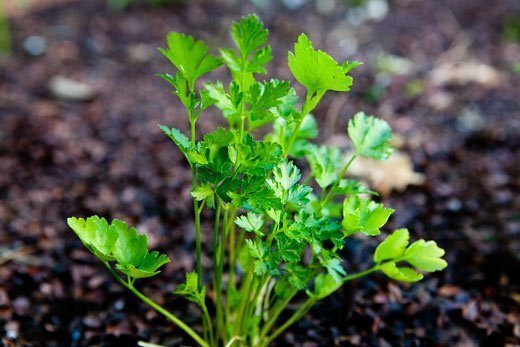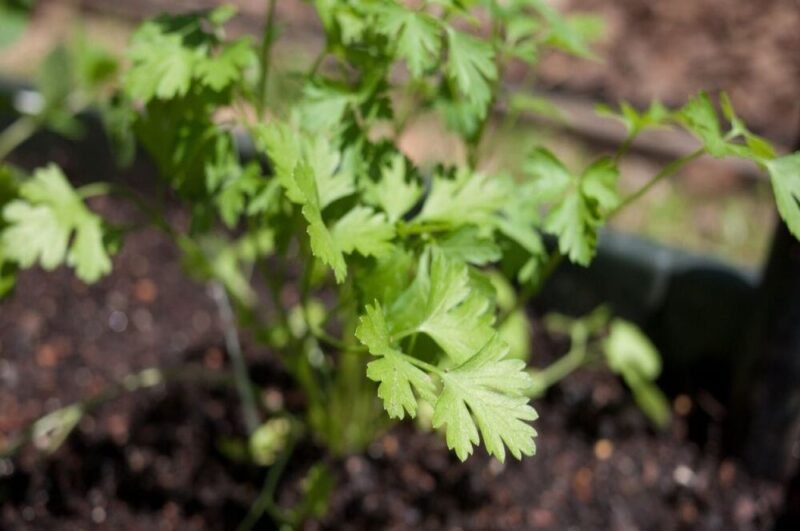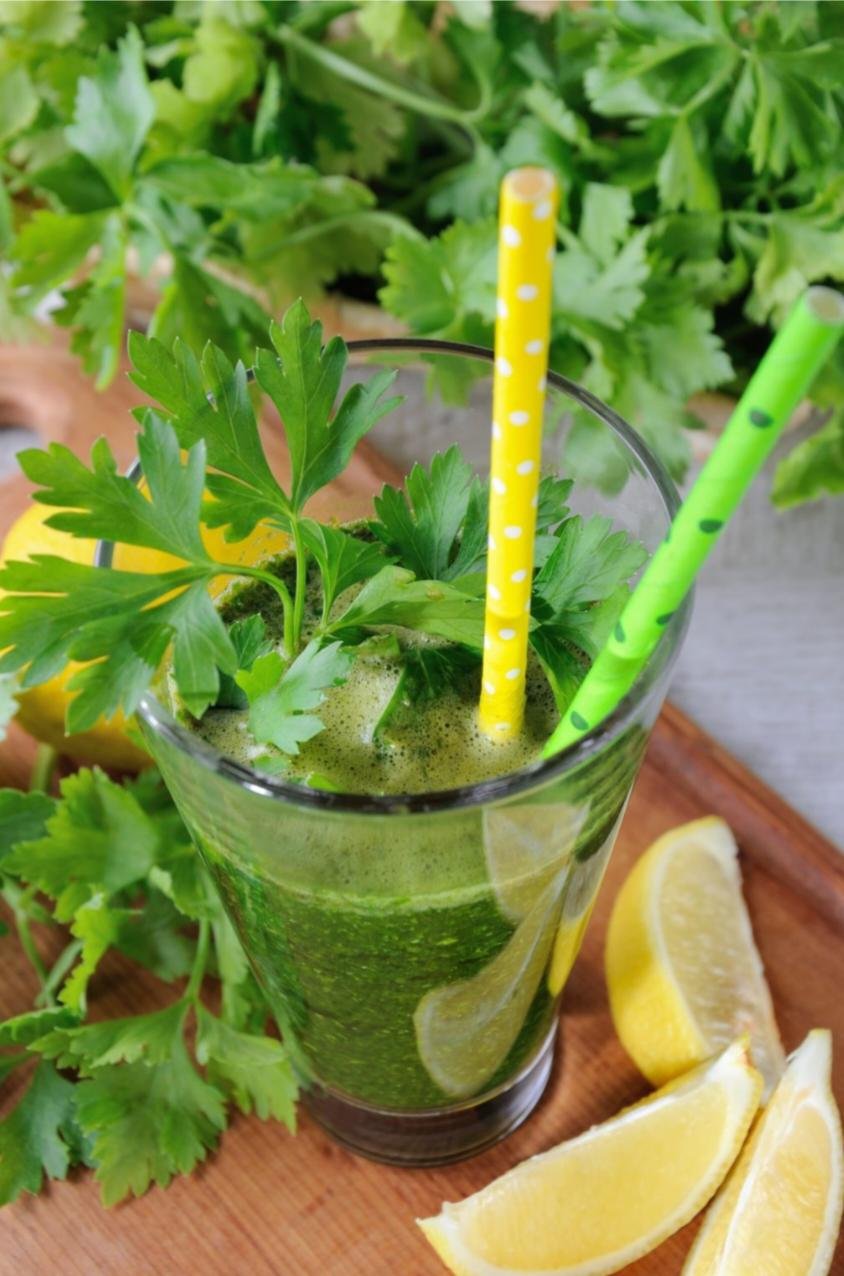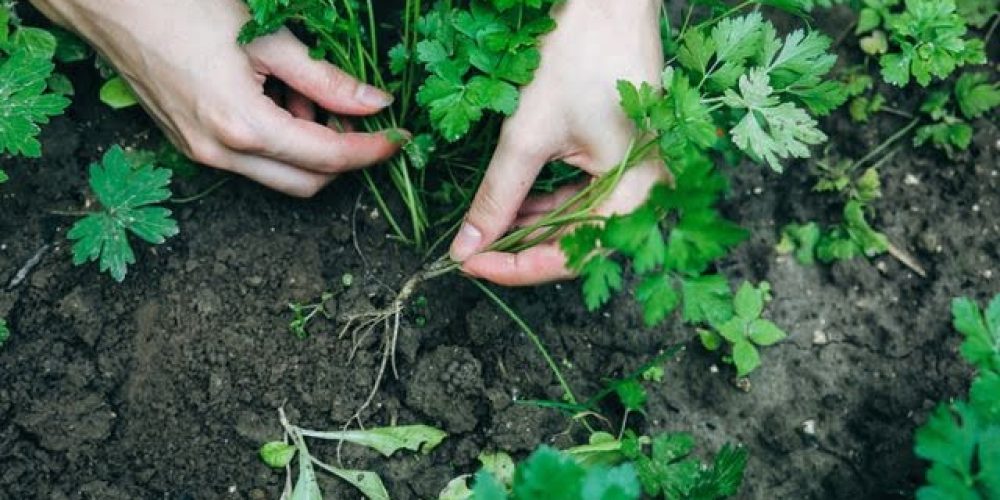Table of contents of the article
Toggle
Parsley is a popular herbaceous plant characterized by its health benefits and multiple uses in cooking and medicine. In this article on your site, WORLD OF PLANTS, we will learn about ways to grow and care for parsley.
What is parsley?
Parsley is a flowering plant found in abundance in the Mediterranean basin, and it is one of the most widespread species. The French curly type and the Italian flat type. Parsley is an essential plant in Arab cuisine as an herb used in making spices or in cooking food. In addition to its palatable taste, it has many health benefits. It is used to treat high blood pressure and some allergic diseases. It also contains many important vitamins, such as vitamin (A)(C)(K).
How to grow parsley in the summer season
It is easy to grow parsley indoors in the climate of the Gulf countries, where temperatures reach 40 degrees Celsius, provided that it is grown indoors during the summer months, or that it is grown outside the home in a cooler climate during the winter months. In this article, we will show you why and how to grow this essential herb that grows in the Middle Eastern climate!
Why should we grow parsley?
Parsley is like mint in terms of its benefits for the home. Parsley is an essential herb in Eastern cuisine, especially in preparing the famous Syrian tabbouleh dish! In fact, many families consider parsley an essential herb in the kitchen and that it should be on the weekly shopping list just like tomatoes and onions. It can also be used to make green sauce, to garnish food, and even to make parsley juice (the recipe for preparing parsley juice is at the end of the article)!

Benefits of growing parsley
Parsley has many health benefits because it is rich in iron, vitamins A and vitamins C. Boiled parsley has proven its health benefits in removing kidney stones and is also commonly used as a folk medicine to treat urinary tract infections.
How do we grow this wonderful herb?
Here are the seven easy steps to growing parsley:
1. Agriculture in its seasons
Growing parsley requires a cool season, but…
The good news is that parsley can be grown throughout the year if it is grown indoors, even regardless of the high temperature that reaches 40 and 50 degrees Celsius, as is the case in the hot climate of the Gulf countries in summer.
If you live in the Levant, you will be able to grow parsley (an herb native to the Mediterranean region) year-round, but you will still need to use shade cloth. To shade 30% the lawn during the summer months.
If you live in the Gulf region and want to grow parsley outside the home, you should wait for the winter to plant it, and you can plant it at any time during the months of November and February.
Depending on where you live, the climate will either be more moderate (such as that of the Levant) or drier and hotter (such as that of the Gulf region and the interior of North Africa), and therefore, you should follow the guidelines above.
2. Soil
Make sure the soil is well-drained for water; Because according to our previous experience, parsley does not live in clay soil. If you use a multi-use soil mixture, it will be good for growing your organic vegetables, but if you feel that the soil is dense or heavy, all you have to do is add more peat moss or coconut shells to it.
3. The sun
Parsley needs full sun (8 hours a day), but 6 hours is also considered sufficient sun. Therefore, if you are growing indoors, place parsley on a window facing south so that it receives enough sunlight, otherwise the plants will become leggy (bowed) and their leaves will be pale! (And I have never seen a person admire long-stemmed plants!)
4. Is it possible to grow parsley without seeds?
Many people think that parsley can be grown without seeds. So, is it possible to grow parsley without seeds?
Parsley is not a tree herb like rosemary, sage, or mint, and therefore should not be grown using cuttings from another plant. Instead, plant them as seeds directly into the soil.
5. Planting seeds
- Depth: 1 cm
- The final distance between each plant: 20 cm
- Plant the seeds in the ground or in a basin. The basin should be 20 cm wide and 20 cm deep. If you are planting in a container, make sure to place the container in a window with full sun coverage.
- Be patient when planting; Because parsley takes up to 4 weeks to germinate! Soak the seeds in water for 24 hours before planting them to speed up the germination process.
- Because parsley seeds take a long time to germinate, you may forget you even planted them! So, mark the bed or rows of parsley to remember that the parsley you planted is where you marked it!
6. Follow the parsley carefully
- For a continuous supply of parsley, fertilize by sprinkling light amounts of compost around the plant every 4 weeks.
- Use insecticidal soap and other home-made or commercial organic sprays if the plant is affected by whiteflies, aphids, or lepidoptera.
- Do not leave the soil too wet; Because this encourages the plant to become infected with fungal diseases.
7. Check the quality of the plants
Here are our best tips for harvesting parsley:
- For your first harvest, pick the outer veins of parsley when the leaves are good in size.
- At the second harvest and thereafter, cut the parsley at ground level. The plant will be more productive this way.
Diseases that may affect parsley and their treatment
Diseases
There are a number of diseases that may affect the parsley plant, the most important of which are:
- Stem rot.
- Black spots appear on the plant's leaves.
- Carrot fly and its larvae.
- Fungal diseases that frequently appear during warm and humid weather.
- Parsley worms, which cause danger to the leaves and cause them to erode.
- Whitefly.
treatment
To prevent these pests and diseases, it is preferable to apply a foaming insecticide to the lower part of the plant, such as the stem.
Tips for caring for parsley
There are a number of tips for growing and caring for parsley, including:
- It is preferable to plant parsley alongside some vegetables, such as sweet peppers, cabbage, carrots, garlic, corn, onions, peas, or tomatoes. Because it produces volatile oils that help repel pests and insects.
- It is preferable not to plant parsley next to lettuce.
- If the plant is infected, it is preferable to remove the damaged part and ventilate it better.
- You should avoid overwatering the plant as much as possible.
- Care must be taken to ensure continuous soil drainage to prevent water from accumulating.
- Before starting planting, it is preferable to spread organic fertilizer in the form of granules to support the soil with the appropriate elements.
Methods of growing parsley
Growing parsley from seeds
If there is a garden with sufficient space, parsley can be grown as follows:
- Special containers with drainage holes are chosen, special soil is used that is not garden soil, and seeds are planted 1-2 inches apart and at a depth of a quarter of an inch.
- The pot is placed in a designated place, so that light can enter it.
- The process of growing parsley takes a long time, especially if it is grown indoors.
- To speed up the plant's growth process, it is best to separate the seeds, cool them in the refrigerator, and then place them in lukewarm water overnight.
- After a period of time, the plant needs to be transferred to larger containers. Because the parsley plant is a herbaceous plant that has long roots.
- Parsley grown using this method usually needs to be harvested after about 12-14 weeks.
Growing parsley from seedlings
Growing parsley plants in this way is characterized by a faster harvest than the seed method, which is done as follows:
- It should be noted that the weather temperature is one of the most important things that must be taken into consideration in this method. If the weather is warm, the seedling is planted outdoors, and if it is cold, it is planted indoors approximately six weeks before the transfer process.
- The rows are built so that they are spaced about 25-30 cm apart from each other.
- Parsley is a plant that is best grown alongside flowers or leafy plants.
- Note that the parsley plant is one of the plants desired by small animals and rats.
How to grow parsley
There are a number of steps that must be followed to ensure the growth of the parsley plant and the success of its cultivation, which are:
The parsley plant is grown in pots and placed in a sunny window, if planting is in the winter.
Holes are dug into the soil according to the size of the plant. If the plant is small, about 15-20 cm are dug, and if it is large, 20-25 cm are dug.
After planting, the plant needs 2-4 weeks to start growing.
Since parsley seeds are small, they are planted about a quarter inch into the soil and pressed with a finger.
After completing the planting process and covering it with soil, the soil is sprayed with water in the form of a light mist. To maintain its moisture without adding too much water.

Parsley juice
You need a blender to prepare this natural antioxidant smoothie:
- 🌟 Two handfuls of parsley (with veins)
- 🌟Green apples 2
- 🌟 Option number 2
- 🌟 Lemon 2
- 🌟 A 3 cm piece of ginger
- 🧊 Snow
These ingredients are sufficient to prepare only two drinks
We are satisfied with this and wish you an enjoyable cultivation of this herb throughout the year!
In conclusion, we would like to note that we, at the world of plants website, offer you all the necessary services in the world of plants, we provide all farmers and those interested in plants with three main services::-
- Artificial intelligence consulting service to help you identify diseases that affect plants and how to deal with them.
- Blog about plants, plant diseases and care of various crops ... You are currently browsing one of her articles right now.
- An application that provides agricultural consultations to clients, as well as a service for imaging diseases and knowing their treatment for free – Click to download the Android version from Google Play Store، Click to download the IOS version from the Apple App Store.
References
How to grow parsley? Everything you need to know - planting.mawdoo3
How to grow parsley in the summer season - sowegrow




